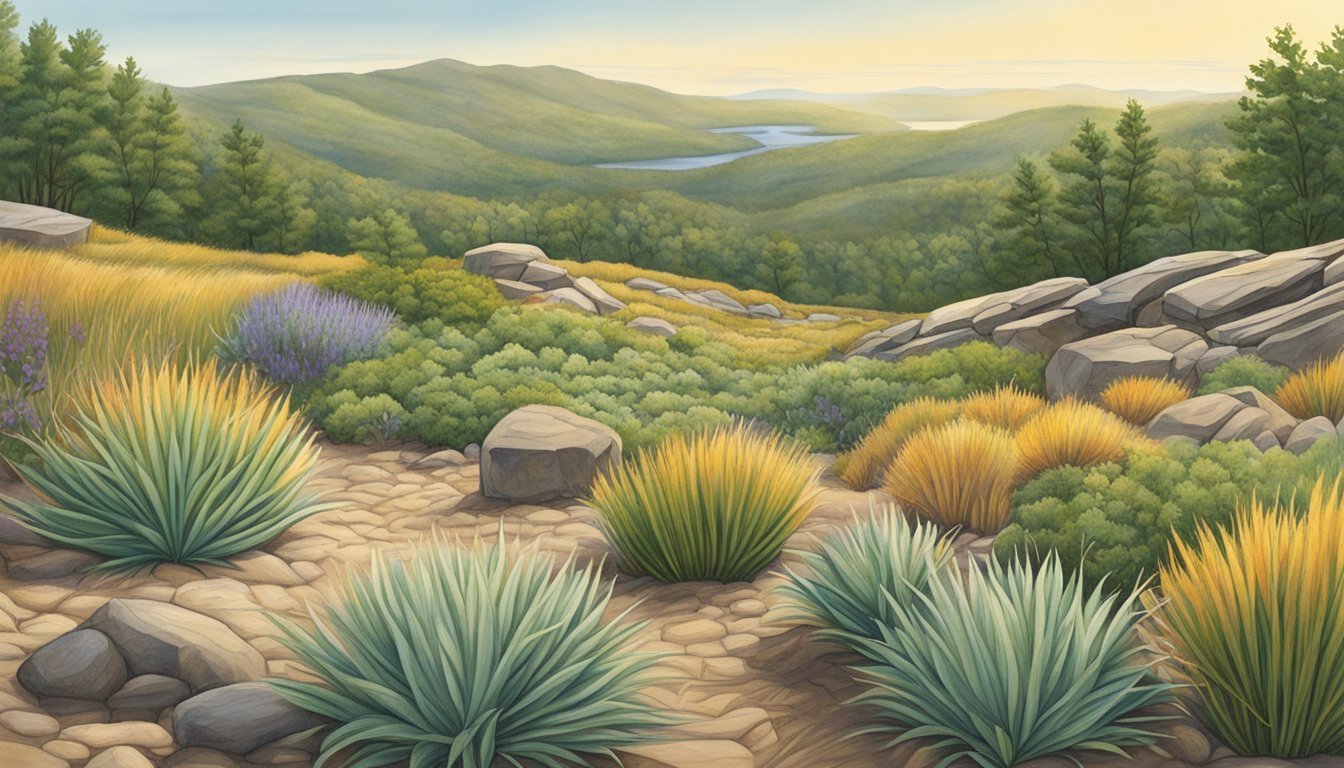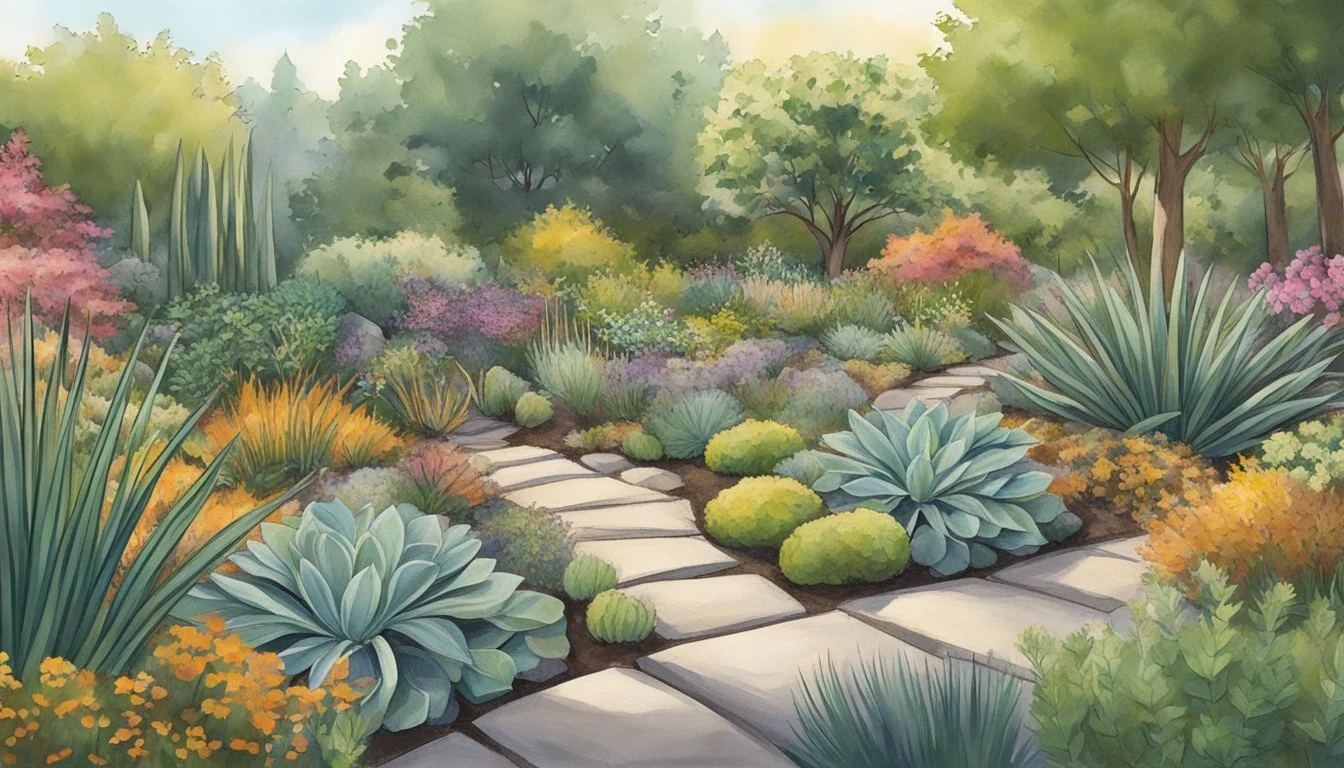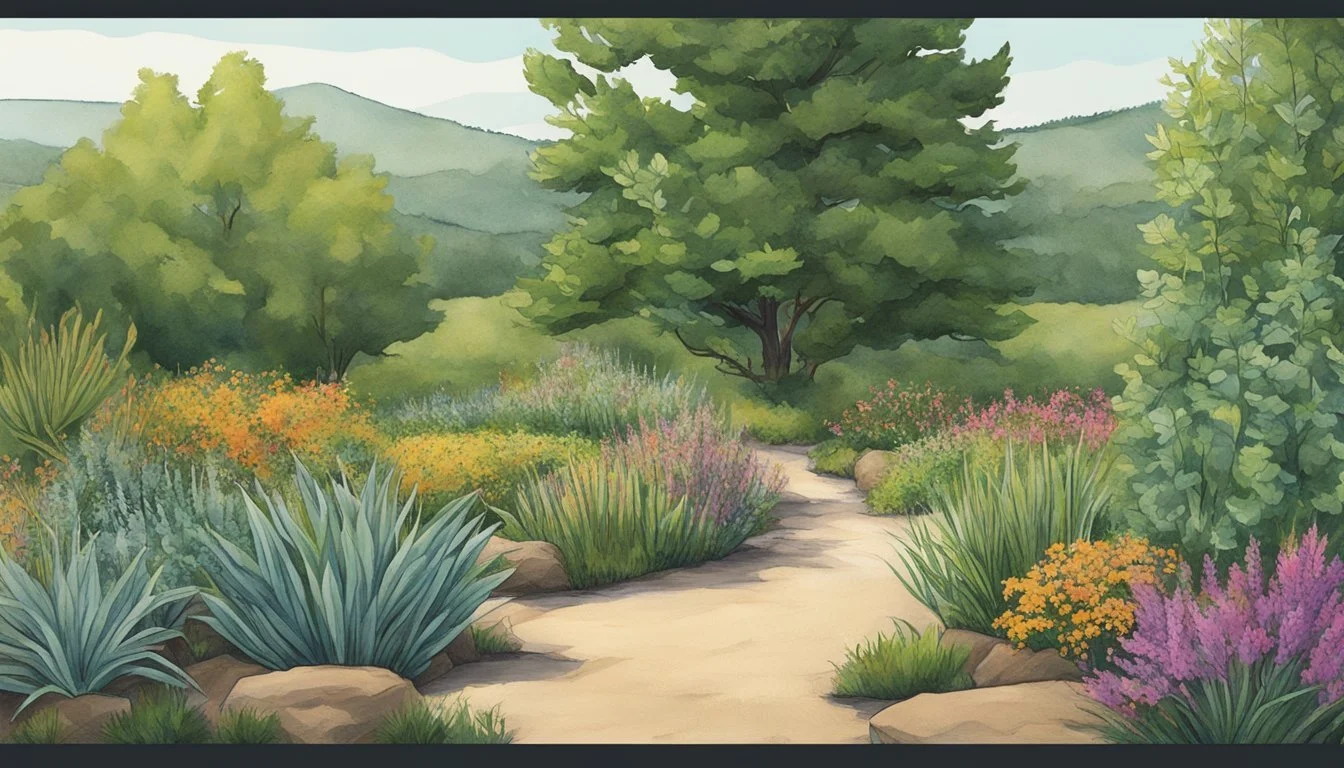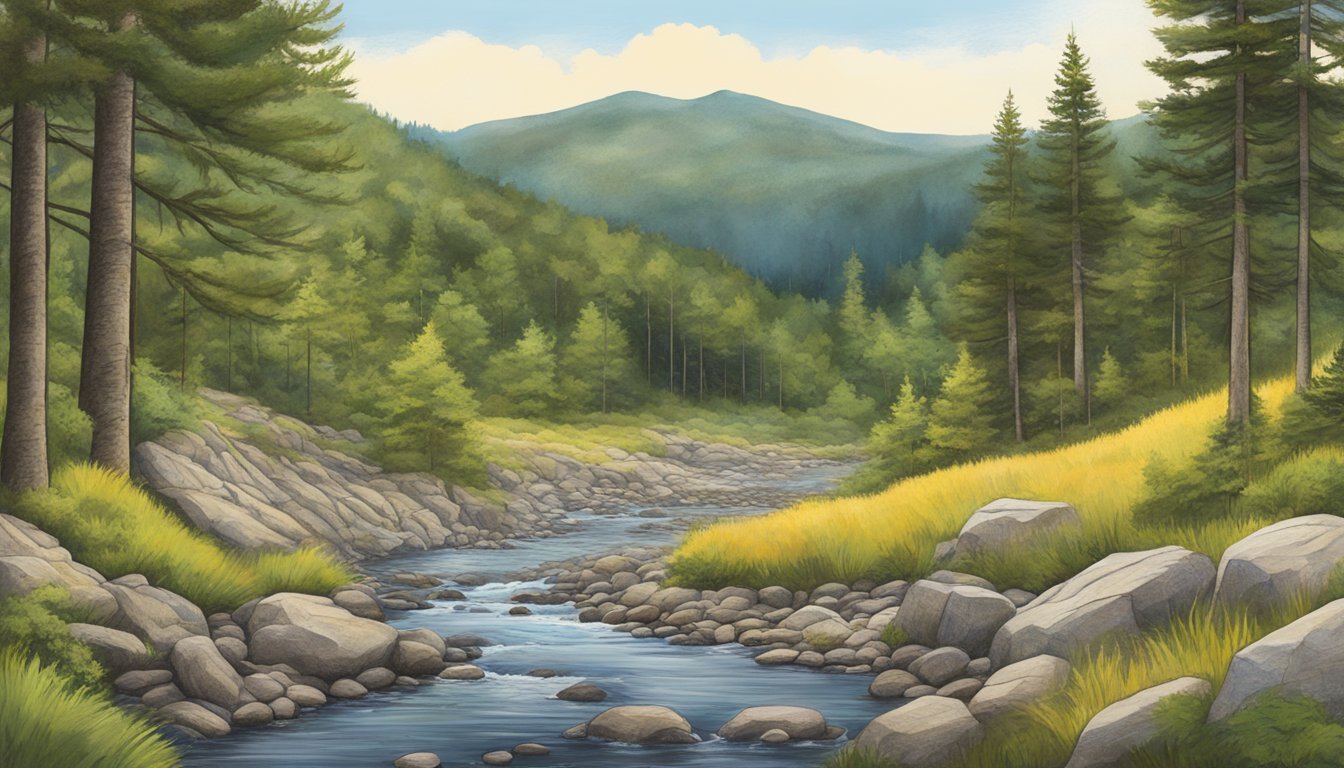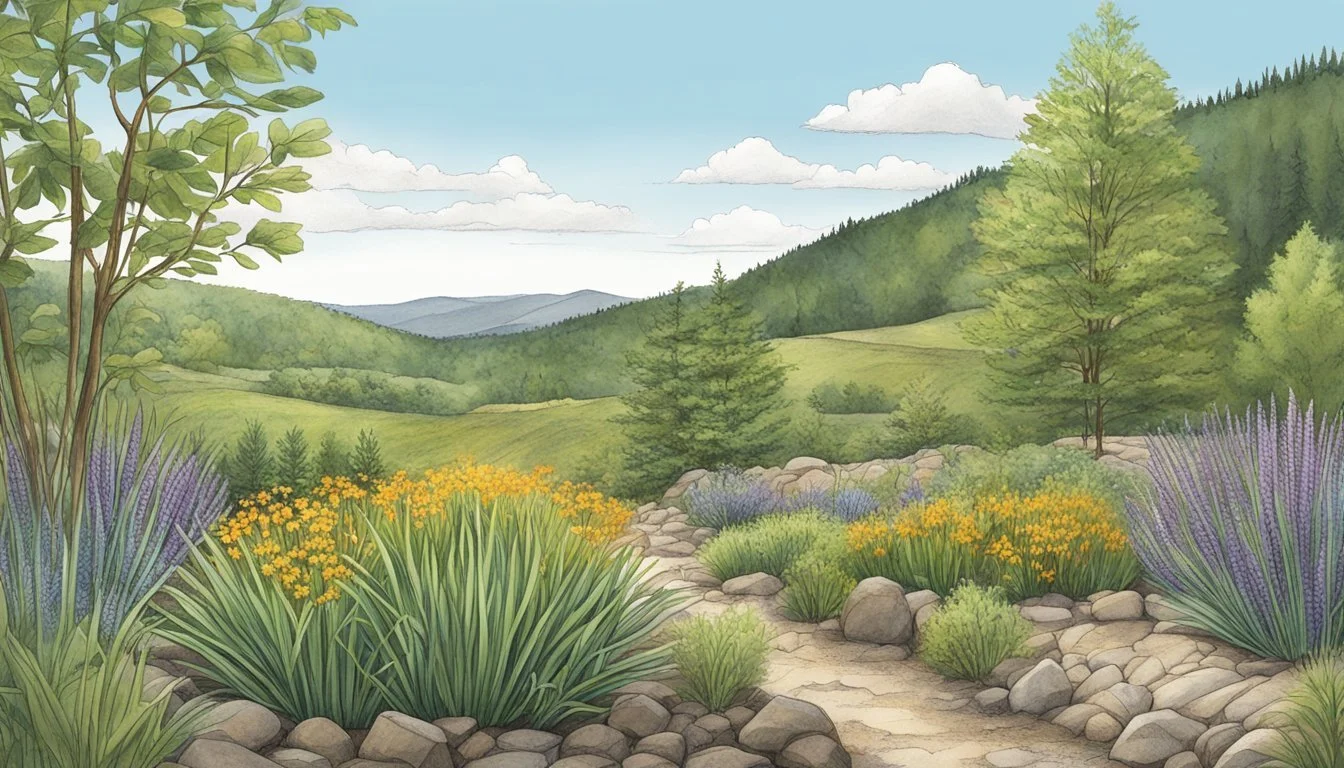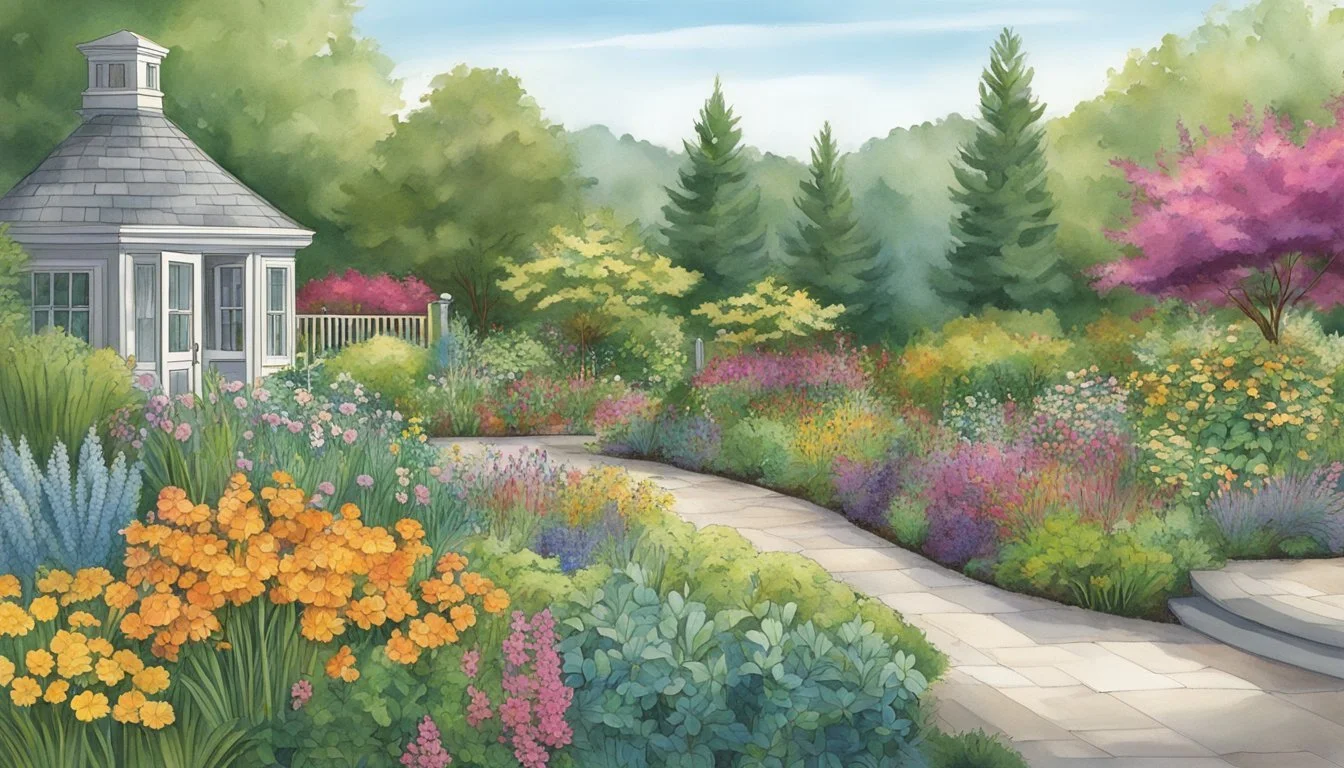Drought-Tolerant Plants in Vermont
Thriving Flora for Arid Climates
Understanding the benefits of drought-tolerant plants is becoming increasingly important in the context of Vermont's changing climate. With the possibility of more frequent dry spells and irregular rainfall patterns, gardens and landscapes need to adapt for sustainability and resilience. Drought-tolerant plants, which are adapted to thrive with less water, offer a practical solution for gardeners and landscapers in Vermont. Not only do these plants help conserve water, but they also reduce the need for maintenance and resources.
In Vermont's diverse climate, selecting the right plants is key. Plants that naturally cope with dry conditions can maintain their vigor and contribute to the aesthetic and ecological value of a garden, even under the stress of reduced water availability. Incorporating drought-tolerant perennials into landscaping not only supports local ecosystems but also mitigates the effects of water scarcity. By choosing species that are well-suited to the local environment, Vermonters can create gardens that are both beautiful and environmentally responsible.
As climate change continues to influence weather patterns, the use of drought-tolerant plants may become an essential component of horticultural practices in Vermont. Gardeners are turning towards species that can withstand challenging conditions, such as the American bellflower and butterfly weed, which are examples of native flora with a natural propensity for drought resilience. These plants not only enhance the local habitat but also serve as a testament to the adaptability of nature, ensuring that Vermont's gardens remain vibrant and full of life even as the climate evolves.
Understanding Drought and Climate in Vermont
In Vermont, the interplay between climate dynamics and ecosystem responses culminates in unique challenges, such as drought, impacting both natural and cultivated landscapes.
Impact of Climate Change on Vermont's Ecosystem
Climate change has been a driving factor in altering precipitation patterns in Vermont. As noted by the Vermont Department of Health, climate models predict an intensification of drought conditions due to climate change. Such shifts lead to a spectrum of ecological effects, ranging from water shortages in the summer season to stress on native plant species and wildlife.
The state has observed increases in average yearly precipitation; yet, paradoxically, this does not shield it from the acute drought conditions that affect its ecosystems during drier seasons. Vermont's flora and fauna are accustomed to certain seasonal rhythms, and disruptions in these patterns due to climate change could result in adverse impacts on biodiversity and forestry health.
Defining Drought-Resistant Gardening
Drought-resistant gardening refers to the strategic selection and management of plants to withstand periods of low water availability. Drought tolerance involves choosing species that can thrive under reduced water conditions. For instance, the cultivation of species suggested in the Vermont Tree Selection Guide reflects an understanding of soil moisture requirements and plant resilience.
These practices are not only vital for maintaining gardens but also for ensuring the stability of the larger agricultural and natural landscapes in Vermont. By integrating drought-resistant techniques and species, gardeners and land managers can mitigate the effects of water shortages during summer drought conditions, preserving the integrity and sustainability of their environments.
Principles of Drought-Tolerant Landscaping
In Vermont's diverse landscape, integrating drought-tolerant principles ensures the ecological conservation of water and fosters sustainable gardening practices. Addressing the area's water restrictions and emulating a natural ecosystem, homeowners can create an aesthetically pleasing and resilient outdoor space.
Basics of Xeriscaping
Xeriscaping employs seven fundamental principles strategically tailored for efficient water use in landscapes. Firstly, it involves planning and design to assess and utilize the existing topography, natural vegetation, and intended use of the area. Drought-resistant plants are selected for their ability to thrive with minimal irrigation. Grouping plants with similar water requirements ensures optimal water use. To prevent water loss and support plant life, efficient irrigation systems, such as drip irrigation, are essential.
Soil Preparation and Improvement
The foundation of a drought-resistant landscape hinges on soil that promotes water penetration and retention. Incorporating organic matter into the soil improves its structure, allowing plant roots to establish deeper into the ground where moisture persists longer. Mulch is a key component; it reduces surface evaporation and temperature fluctuations, conserving valuable soil moisture.
Efficient Watering Practices
Watering practices are crucial for conservation in drought-tolerant landscaping. Water deeply but infrequently to encourage strong root systems that can access water at deeper soil levels. Use irrigation timers and rain sensors to prevent overwatering and schedule watering during early morning or late evening to reduce evaporation. Monitoring the landscape and meeting the specific needs of each plant will optimize water use and maintain plant health.
Selecting the Right Plants for Vermont's Climate
In Vermont's varied climate, choosing plants that can thrive with minimal irrigation is essential for creating a sustainable garden. Drought-tolerant species, once established, provide resilience against dry spells and contribute to a diverse and hardy landscape.
Drought-Resistant Trees and Shrubs
When selecting trees and shrubs for Vermont gardens, it is important to consider species that naturally withstand dry conditions. For example, the Serviceberry (Amelanchier) and Red Osier Dogwood (Cornus sericea) not only offer beautiful blooms and foliage but also require less frequent watering once established. These species are also known for providing habitat and food for wildlife, reinforcing the garden's ecosystem.
Perennial Favorites for Dry Climates
Perennials are the backbone of many gardens, returning year after year with minimal care. In a Vermont garden, drought-tolerant perennials such as the Black-Eyed Susan (Rudbeckia) and Daylilies (Hemerocallis) are reliable choices. They require less water, and as native to Vermont, they are well-adapted to the local climate.
Annuals and Bulbs Suited for Less Water
For color and variety without the high water requirement, gardeners can choose annuals and bulbs that are drought-tolerant. The Blanket Flower (Gaillardia) and Gladiolus bulbs are known for their vibrant blooms and ability to thrive in drier soils. They add a splash of color to the garden and are often easy to care for, requiring only occasional deep watering during extended periods of drought.
Creating a Diverse Ecosystem
Incorporating drought-resistant plants not only conserves water but also supports local wildlife. A well-planned garden can attract a variety of pollinators, while also providing sustenance through carefully chosen edible plants.
Attracting Pollinators with Drought-Resistant Flowers
Selecting the right flowers for a garden can create a vibrant ecosystem, even in arid conditions. Lavender, with its soothing fragrance, can thrive with minimal water, attracting bees with its purple flowers. Yarrow and Sage are also excellent choices that can form dense clusters of blooms, which are highly attractive to pollinators. These hardy perennials prove that even drought conditions can yield a lush, vibrant garden.
Lavender: Not only lures bees but also emits a calming scent.
Yarrow: Offers a variety of colors and is known for its resilience.
Sage: Draws in pollinators with its aromatic leaves and flowers.
Including Edible Plants in a Dry Garden
A dry garden can be more than ornamental; it can serve as a source of food. Sage, while beneficial for pollinators, is also an edible herb that can be used in numerous culinary dishes. Coneflower provides orange flowers that catch the eye and can be used in herbal teas. The Butterfly Weed, a type of milkweed, adds a splash of color and serves as a vital plant for butterfly larvae. These plants ensure a diverse garden that can withstand drought and feed both humans and wildlife.
Sage: Aromatic, edible, and drought-tolerant.
Coneflower: Provides visual appeal and herbal benefits.
Butterfly Weed: Brightly colored and crucial for butterfly populations.
Maintenance and Care in Dry Conditions
In the dry, often challenging climate of Vermont, drought-tolerant plants require specific maintenance strategies to thrive. The key to success hinges on efficient water conservation, proper mulching and fertilization, and seasonal care for protection from climate extremes.
Water Conservation Strategies
Effective water conservation is critical during the hot, dry summer months. One should implement a watering schedule that maximizes efficiency, such as early morning or late evening, to reduce evaporation. Utilizing drip irrigation or soaker hoses can directly supply water to the roots, where it's most needed. A rain gauge aids in tracking water levels to ensure plants receive approximately one inch of water per week. For robust information on this aspect, consulting the Vermont Department of Health is recommended.
Mulching and Fertilization
Mulching serves dual purposes: it maintains soil moisture and regulates temperature. A layer of organic mulch around the base of plants can prevent water evaporation and discourage weed growth. When it comes to fertilization, a light hand is required. Overfertilization can promote lush growth that is less tolerant of drought. Instead, the emphasis should be on fostering deep root growth with well-timed, minimal applications of fertilizer, preferably organic, suited to poor or well-drained soils. For specific plant lists and their care requirements, resources like the University of Vermont Sea Grant provide valuable insight.
Seasonal Care and Protection from Extremes
Seasonally, the care for drought-tolerant plants shifts. In preparation for the growing season, early spring pruning clears away deadwood and rejuvenates plants. Ground covers can be beneficial in stabilizing temperatures around plants and preventing soil erosion. As winter approaches, it is crucial to ensure proper protection against frost. This can be achieved by covering plants with burlap or moving potted plants indoors. The correct application of mulch can also serve as insulation against rapid temperature fluctuations. Detailed guidance on seasonal care practices can be found via gardening experts at Blooming Backyard.
Innovative Planting Strategies for Rugged Terrains
In Vermont's diverse topography, finding practical solutions for gardening in rugged terrains with full sunlight exposure requires specific strategies. These techniques focus on plant selection and innovative garden designs accommodating hot and dry conditions.
Utilizing Ground Covers and Low-Growing Plants
Ground covers and low-growing plants, such as Thyme and Creeping Thyme, serve as excellent options for rugged terrain. They not only prevent soil erosion but also minimize water evaporation. Planting Thyme varieties provides dense coverage, ensuring that the ground remains cool and moist. Sage and Artemisia, both adept at thriving in full sun, add variety and texture to the garden scape.
Full Sun Plants
Thyme
Creeping Thyme
Sage
Artemisia
Maximizing the Benefits of Succulents and Cacti
Succulents such as Hen and Chicks and Stonecrop are ideal for rugged terrains, given their ability to store water and sustain periods of drought. With succulents, gardeners can create a low-maintenance landscape that can resist the challenges of a full sun and hot environment. Moreover, Yucca is another hardy option, able to withstand dry conditions while providing an attractive vertical element.
Drought-Resistant Succulents
Hen and Chicks (Sempervivum)
Stonecrop (Sedum)
Yucca
Implementing Raised Beds and Containers
Raised beds and containers offer gardeners in Vermont the opportunity to control soil quality and drainage, key factors for cultivating plants in hot and dry climates. Using containers allows for mobility, enabling plants to be moved as required to protect them from extreme conditions. Additionally, in areas of rugged terrain, where soil may be poor, containers filled with a well-draining soil mix can host a variety of drought-tolerant flora such as Cacti and Succulents.
Raised Beds/Containers Benefits
Improved Drainage
Soil Quality Control
Plant Mobility
Choosing the right plants and gardening strategies makes it possible to create vibrant and sustainable landscapes even in the most challenging of Vermont's terrains.
Expanding the Palette with Ornamental Varieties
Creating a diverse and resilient garden in Vermont requires integrating plants that are not only drought-tolerant but also bring visual interest and variety. The expansion includes ornamental grasses and herbs, as well as vibrant, heat-loving flowers that contribute rich colors and unique textures to the landscape.
Drought-Resistant Ornamental Grasses and Herbs
Ornamental grasses are a cornerstone of drought-tolerant landscaping due to their hardiness and low water requirements. Blue Fescue forms compact, silvery-blue tufts, making it a popular choice for borders and ground cover. The grasses blend effortlessly with drought-resistant herbs like Lavender, which provide a sensory bonus of fragrance and spikes of purple flowers. Such pairings offer both aesthetic appeal and practical benefits, as their deep roots help them access moisture from below the surface, reducing the need for frequent watering.
Switchgrass, with its upright habit and feathery flower spikes, adds texture and movement.
Blue Flax presents tall, elegant stems topped with pale blue blossoms that sway gracefully in the breeze.
By choosing these plants, gardeners in Vermont can ensure their gardens are lush and green, even under the heat strains of summer.
Exploring Color with Heat-Loving Flowers
Gaillardia, also known as Blanket Flower, is an excellent addition to the drought-tolerant garden, boasting bold, red and yellow blooms that attract pollinators. Similarly, Sedum, with its succulent leaves and clusters of flowers, survives well in dry conditions. The plant forms a rosette pattern that adds structural diversity to garden beds.
Here are some other colorful options:
Black-Eyed Susan: Known for its golden-yellow petals and dark center, this plant is a perennial favorite.
Salvia: Offers spires of flowers in various hues, including indigo, attracting both the eye and wildlife.
Candytuft: Bears clusters of white flowers that can brighten up any corner of the garden.
Asters: Flourish in a spectrum of colors and are particularly noteworthy for their late flowering period, extending the garden's color into fall.
Each of these flowers brings a rich palette and ornamental warmth to Vermont gardens while maintaining resilience to heat and drought. They not only survive but thrive, providing vibrant flower spikes and lush foliage throughout the growing season. Integrating these plants can transform a garden into a hearty, low-maintenance, and visually captivating landscape.
Sustainable Gardening and Long-Term Impact
In Vermont, sustainable gardening practices are crucial for adapting to climate change and supporting a robust ecosystem. Embracing drought-tolerant plants is a proactive approach that aligns with long-term environmental conservation efforts.
Adapting to Long-Term Climate Trends
With the expectation of altered precipitation patterns over the next decades, Vermont gardeners are adjusting their practices to maintain productivity. Drought-tolerant plants have become essential in areas where well-drained soil is prevalent. This adaptation does not only benefit the gardeners but also ensures the conservation of resources. By selecting plants suitable for the local climate change scenarios, Vermont's gardening community is a forerunner in North America for sustainable landscape management.
Supporting Biodiversity and Ecosystem Health
Drought-tolerant plants support the natural landscape and local wildlife, playing a vital role in preserving biodiversity within the region. The inclusion of these species in mixed borders and gardens extends beyond visual appeal, providing a backbone for ecosystem health. These plants often need less irrigation and chemical support, fostering a balanced environment where native flora and fauna can thrive. Enthusiasts dedicated to this cause contribute to a resilient ecological network that benefits both current and future generations in Vermont.
Frequently Asked Questions
In this section, one will find answers to common queries about establishing a drought-resistant garden in Vermont's unique climate, focusing on low maintenance and native plant options suited to various conditions.
What are some low maintenance plants that are drought resistant for a Vermont garden?
Low maintenance, drought-resistant plants for Vermont gardens include species like sedum and lavender, which require little care once established and cope well with minimal watering.
Can you list drought tolerant plants suitable for full sun exposure in Vermont?
Plants like echinacea and black-eyed Susan are drought tolerant and fare well in full sun exposure in Vermont, making them excellent choices for sunny garden spots.
Which drought tolerant plants thrive best in Vermont's climate?
Grasses such as prairie dropseed and perennials like coreopsis are known for thriving in Vermont's climate while being particularly resilient to drought conditions.
Are there any evergreen options among the drought tolerant plants for Vermont landscapes?
Yes, junipers and some varieties of pine are evergreen and drought tolerant, offering year-round greenery for Vermont landscapes without requiring extensive watering.
What are the best native shrubs for landscaping in Vermont that require minimal watering?
Native shrubs like the New Jersey tea and the fragrant sumac are excellent for Vermont landscaping as they require minimal watering once established and contribute to the local ecosystem.
What perennial plants are both native to Vermont and highly resistant to drought?
Native perennials such as butterfly weed and little bluestem grass demonstrate high drought resistance and are well-suited to Vermont's climate.

